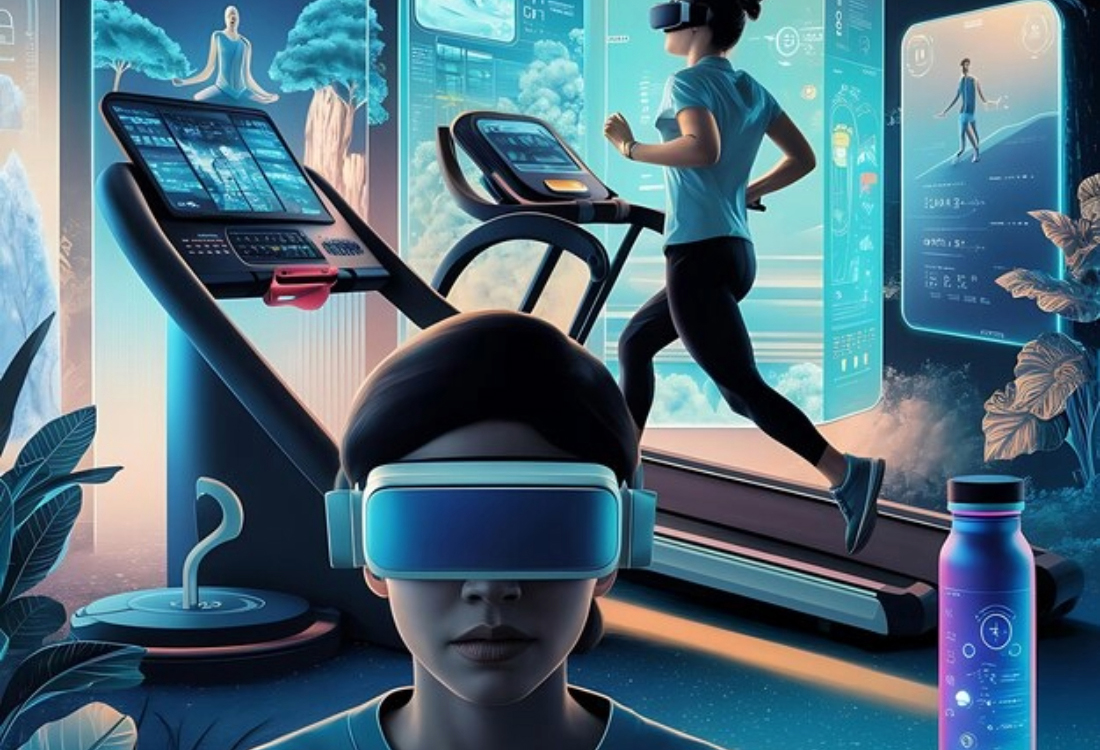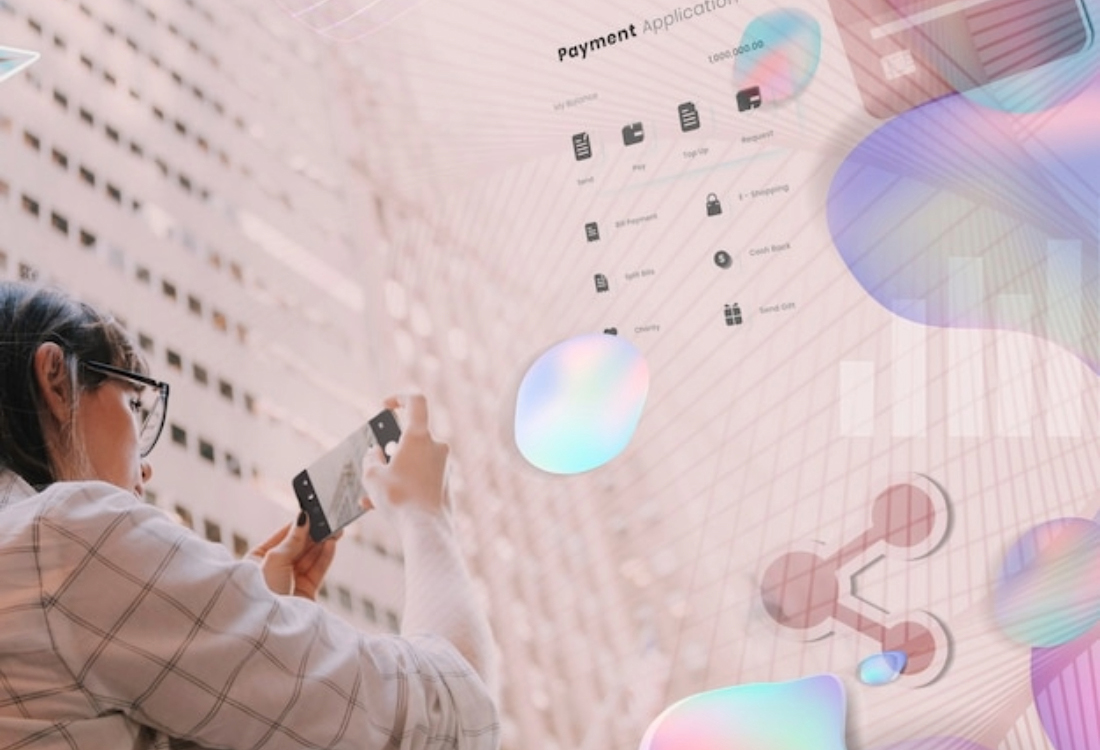5G and Connectivity
Understanding 5G Technology
5G is the fifth generation of mobile network technology, designed to significantly enhance the speed, coverage, and responsiveness of wireless networks. Unlike its predecessor, 4G, which primarily focused on enhancing web browsing and video streaming experiences, 5G introduces a paradigm shift by enabling a broader range of applications and services. With peak data rates reaching up to 20 Gbps, this new technology facilitates much faster download times and improved user experiences.
How 5G Enhances Connectivity
The capabilities of 5G technology go beyond mere speed. It is designed to support up to 1 million connected devices per square kilometer, making it a cornerstone for the Internet of Things (IoT). This increased connectivity allows smart devices, infrastructure, and vehicles to communicate more efficiently and effectively. For instance:
- Smart Cities: 5G can provide the backbone for traffic management systems that autonomously adjust to real-time traffic conditions, thereby reducing congestion and enhancing the efficiency of public transportation.
- Healthcare Applications: Remote surgeries and telemedicine can become a reality, with doctors performing procedures on patients from great distances using 5G-enabled devices that provide real-time data streaming.
- Augmented Reality (AR) and Virtual Reality (VR): With the reduced latency provided by 5G, immersive experiences in AR and VR can be enhanced, delivering seamless interactions in gaming and training applications.
Key Features of 5G Connectivity
5G introduces several essential features that are critical for improving connectivity:
- Low Latency: One of the most remarkable aspects of 5G is its ultra-low latency, which is expected to be as low as 1 millisecond. This feature is vital for applications where instant response is crucial, such as autonomous vehicles or emergency response systems.
- Enhanced Capacity: With the ability to handle more devices simultaneously, 5G supports the growing demand for bandwidth without compromising service quality.
- Higher Reliability: 5G networks are designed to be more reliable, ensuring uninterrupted service even in high-demand situations, which is especially important for business applications.
Tech Trends and Innovations Driven by 5G
The rollout of 5G technology is fueling a wave of Tech Trends and Innovations across different sectors. These innovations not only rely on better connectivity but also contribute to more intelligent systems. Key trends include:
- Smart Manufacturing: 5G facilitates the implementation of smart factories where machinery and equipment are interconnected. This boosts productivity and minimizes downtime through predictive maintenance.
- Remote Work Solutions: As remote work continues to become more prevalent, 5G supports high-definition video conferencing tools and seamless collaboration platforms, ensuring that teams can communicate and collaborate efficiently.
- AI and Machine Learning: With faster data processing and communication speeds, 5G enables real-time data collection for AI applications, leading to more accurate predictive models and personalized services for consumers.
Challenges and Considerations
While the potential of 5G technology is vast, there are also challenges to consider:
- Infrastructure Requirements: Implementing 5G requires significant investment in new infrastructure, including a dense array of small cell tower installations.
- Security Concerns: With increased connectivity comes increased vulnerability, necessitating robust security measures to protect sensitive data and systems.
- Regulatory Hurdles: The deployment of 5G technology will need to navigate complex regulatory landscapes, which can slow down the rollout in various regions.
The Future of 5G and Connectivity
As 5G networks continue to expand globally, they will catalyze an era of unprecedented connectivity that will enhance productivity, foster innovation, and reshape the way we interact with technology. The intersection of 5G and Tech Trends and Innovations suggests a future where digital and physical worlds merge seamlessly, leading to smarter cities, more efficient industries, and an interconnected society.
Understanding AI and Machine Learning
Artificial Intelligence (AI) and Machine Learning (ML) are transforming the way we interact with technology and understand data. At its core, AI refers to the simulation of human intelligence processes by machines, particularly computer systems. Machine Learning, a subset of AI, involves the development of algorithms that allow computers to learn from and make predictions based on data.
Key Concepts in AI and Machine Learning
AI encompasses a variety of technologies, including:
Natural Language Processing (NLP): This technology enables machines to understand and respond to human language. For example, virtual assistants like Amazon Alexa and Apple Siri use NLP to process user queries.
Computer Vision: This area focuses on enabling machines to interpret and make decisions based on visual data. Applications such as facial recognition and medical image analysis exemplify computer vision capabilities.
Tech Trends and Innovations in AI and Machine Learning
The landscape of AI and Machine Learning is continuously evolving, showcasing numerous trends and innovations that have far-reaching implications.
1. Predictive Analytics
Predictive analytics harnesses the power of AI and ML to analyze historical data and predict future outcomes. For example, retail companies like Walmart utilize these insights to optimize inventory management and enhance customer experiences.
2. Reinforcement Learning
Reinforcement Learning (RL) is an advanced area of machine learning where agents learn to make decisions through trial and error within an environment. Google DeepMind’s AlphaGo is a prime example, where RL techniques allowed the AI to outperform human champions in the complex board game Go.
3. Automation and Robotics
AI-driven automation is revolutionizing various industries by streamlining processes and improving efficiency. For instance, industries such as manufacturing and logistics incorporate robots equipped with AI to undertake repetitive tasks, allowing human workers to focus on more strategic roles.
4. Enhanced Personalization
Businesses are leveraging AI and ML to deliver personalized services to customers. Streaming platforms like Netflix and e-commerce sites such as Amazon utilize recommendation systems driven by machine learning algorithms to suggest content or products tailored to individual user preferences.
The Ethical Considerations and Challenges of AI and Machine Learning
With the rapid advancement of AI and ML technologies, it is crucial to address the ethical implications and challenges that arise. Key issues include:
1. Data Privacy
The use of vast amounts of data raises concerns over user privacy. Companies must ensure that data collection and usage comply with laws and ethical standards, such as the General Data Protection Regulation (GDPR) in Europe.

2. Bias in AI Systems
ML algorithms can unintentionally perpetuate biases present in training data, leading to unfair outcomes. For instance, biased algorithms in hiring processes may disadvantage certain groups. It is imperative to develop and implement strategies to mitigate bias in AI systems.
3. Job Displacement
As AI and ML technologies automate tasks, there is a growing concern about job displacement across various sectors. Investing in retraining and upskilling workers will be vital in preparing the workforce for a future integrated with AI technologies.
Conclusion
The integration of AI and machine learning into the fabric of modern technology demonstrates immense potential for innovation. As the landscape continues to evolve, staying informed about tech trends and innovations is crucial for individuals and organizations seeking to harness these advancements for growth and efficiency.
Understanding Autonomous Vehicles
Autonomous vehicles (AVs), commonly known as self-driving cars, represent a groundbreaking paradigm shift in the automotive industry. These vehicles utilize a combination of sensors, cameras, and sophisticated algorithms to navigate and drive themselves without human intervention. The technology relies heavily on artificial intelligence and machine learning to make real-time decisions based on their surroundings.
Key Technologies Behind Autonomous Vehicles
Several technologies converge to enable the functionality of AVs:
- LiDAR: This laser-based technology helps AVs create detailed 3D maps of their environment, allowing them to perceive obstacles and plan routes.
- Computer Vision: Through advanced image processing algorithms, AVs can identify traffic signals, pedestrians, other vehicles, and road conditions.
- GPS and IMU: Global Positioning Systems (GPS) provide geolocation data, while Inertial Measurement Units (IMUs) contribute to accurate positioning and navigation on the road.
Levels of Autonomy
Autonomous vehicles are categorized into six levels of autonomy, defined by the Society of Automotive Engineers (SAE):
- Level 0: No Automation — The human driver is responsible for all tasks.
- Level 1: Driver Assistance — The vehicle may assist with steering or acceleration/deceleration but requires constant human input.
- Level 2: Partial Automation — The vehicle can perform steering and acceleration/deceleration simultaneously but still needs human supervision.
- Level 3: Conditional Automation — The vehicle can manage most driving tasks, but the human must be ready to intervene when necessary.
- Level 4: High Automation — The vehicle can operate independently in specific conditions and environments without human intervention.
- Level 5: Full Automation — The vehicle is fully autonomous and can handle all driving tasks in all conditions.
Real-World Applications and Examples
Several companies are leading the charge in deploying autonomous vehicle technology:
- Tesla: Known for its advanced driver-assistance systems, Tesla’s Full Self-Driving (FSD) software aims to take vehicles towards Level 5 autonomy.
- Waymo: A subsidiary of Alphabet Inc., Waymo has launched a fully autonomous taxi service in select areas, showcasing the potential of AV technologies in public transportation.
- Aurora: Focusing on AV technology for ride-hailing and logistics, Aurora’s systems are designed for complex urban environments.
Challenges Facing Autonomous Vehicles
Despite their potential, several challenges hinder the widespread adoption of AVs:
- Safety Regulations: Ensuring the safety of autonomous systems requires rigorous testing and compliance with regulatory frameworks.
- Public Perception: Trust in AV technology remains low among consumers, often influenced by high-profile accidents involving autonomous systems.
- Technical Limitations: Complex driving environments, such as inclement weather or unpredictable human behavior, pose significant challenges to AV performance.
The Future of Autonomous Vehicles: Tech Trends and Innovations
A wave of tech trends and innovations is expected to shape the future landscape of autonomous vehicles:
- 5G Connectivity: Enhanced communication speeds and low latency through 5G technology will facilitate real-time data exchange between vehicles, infrastructure, and the cloud.
- V2X Communication: Vehicle-to-everything (V2X) technology promises improved safety and traffic management by allowing vehicles to communicate with each other and with road infrastructure.
- Electric and Sustainable Solutions: The integration of autonomous vehicles with electric vehicle technology contributes to sustainable transportation solutions, minimizing environmental impact.
Conclusion
As autonomous vehicles continue to evolve, they hold the potential to transform mobility as we know it. The ongoing advancements in tech trends and innovations will undoubtedly play a pivotal role in shaping a future where self-driving cars become an integral part of daily life.
Introduction to Biotechnology
Biotechnology is a multidisciplinary field that merges biology with technology to create innovative products and processes. It involves harnessing cellular and biomolecular processes to develop technologies and products that help improve our lives and the health of the planet. From medical advancements to agricultural developments, biotechnology plays a pivotal role in shaping the future.
Tech Trends and Innovations in Biotechnology
The intersection of technology and biology has led to numerous tech trends and innovations that are revolutionizing the biotech landscape. Key trends include:
1. Gene Editing Technologies
One of the most significant advancements in biotechnology is the development of gene editing tools, notably CRISPR-Cas9. This innovative technology allows for precise alterations to DNA, enabling scientists to target and modify gene sequences efficiently. For instance, CRISPR has the potential to eradicate genetic diseases like sickle cell anemia and develop crops that can withstand harsh environmental conditions.
2. Synthetic Biology
Synthetic biology is an emerging field within biotechnology that focuses on redesigning organisms for useful purposes. It encompasses the application of engineering principles to biology, allowing for the creation of new biological parts, devices, and systems. One noteworthy example includes the development of yeast cells engineered to produce biofuels, potentially providing sustainable energy sources in the future.
3. Personalized Medicine
With advancements in genomics and biotechnology, personalized medicine is beginning to transform healthcare. Through the analysis of an individual’s genetic makeup, treatments can be tailored to meet specific needs, resulting in higher efficacy and lower side effects. For example, targeted therapies in cancer treatment focus on the unique genetic alterations within a patient’s tumor to deliver more effective treatment plans.
4. Biomanufacturing
Biomanufacturing harnesses biological systems to create products. This innovative method includes the production of pharmaceuticals, enzymes, and bio-based materials using microorganisms. For instance, the production of insulin using genetically modified bacteria is a classic example of biomanufacturing that has greatly impacted the management of diabetes.
5. Agricultural Biotechnology
Biotechnology is also making significant strides in agriculture through the development of genetically modified organisms (GMOs). Crops that are engineered for pest resistance or enhanced nutritional content exemplify tech trends and innovations in this area. For example, Bt corn is a genetically modified crop that produces a protein toxic to specific pests, reducing the need for chemical pesticides and leading to more sustainable farming practices.
Future Directions of Biotechnology
As we look ahead, several key directions may define the future of biotechnology:
1. Integration of Artificial Intelligence
The integration of artificial intelligence (AI) into biotechnology is predicted to streamline drug discovery and development processes. AI can analyze vast datasets to identify potential drug candidates, predict outcomes, and optimize experiments, potentially accelerating the time it takes to bring new therapies to market.
2. Advancements in Microbiome Research
Research into the human microbiome is unlocking new avenues for understanding health and disease. Innovations in biotechnology are facilitating this research, which could lead to probiotic therapies and personalized nutrition that optimize individual health based on unique microbiome compositions.
3. Bioinformatics
Bioinformatics is another crucial trend that pairs biotechnology with data analytics. The ability to analyze genomic data and large biological datasets can dramatically enhance our understanding of complex biological systems, leading to breakthroughs in diagnostics, therapeutics, and personalized medicine.
Conclusion
In summary, the field of biotechnology is constantly evolving, powered by tech trends and innovations that promise to enhance health outcomes, improve agricultural practices, and foster sustainability. As researchers continue to explore the vast potential of biological systems, the implications of these advancements will only become more profound, impacting various sectors worldwide.
Understanding Blockchain Technology
Blockchain technology is a decentralized digital ledger system that securely records transactions across multiple computers. This technology enables the storage of data in a manner that is both transparent and immutable, ensuring that once data is recorded, it cannot be altered retroactively without consensus from the network. This cornerstone of secure data management is increasingly recognized as one of the most significant tech trends and innovations of our time.
Core Components of Blockchain Technology
At its essence, blockchain consists of several key components:
- Blocks: These are individual units of data that contain transaction records. Each block is linked to the previous one, creating a chain.
- Nodes: These are the computers that make up the blockchain network. They validate and store copies of the entire blockchain.
- Miners: In proof-of-work blockchains, miners solve complex mathematical problems to add new blocks to the chain, thereby securing the network.
- Transactions: These are actions transferred using blockchain technology, be it cryptocurrencies or various forms of data.
Applications of Blockchain Technology
Cryptocurrencies
One of the most well-known applications of blockchain technology is in the realm of cryptocurrencies. Bitcoin, launched in 2009, was the first cryptocurrency to successfully utilize blockchain as its underlying technology. This allowed users to conduct transactions without relying on a central authority, thereby reducing fees and increasing security.
Supply Chain Management
Blockchain enhances transparency in supply chains by providing a tamper-proof record of products’ journeys from source to consumer. For example, companies like Walmart use blockchain to track food products, ensuring traceability which can significantly enhance food safety.
Smart Contracts
Smart contracts are self-executing contracts with the terms of the agreement directly written into code. They automatically enforce and execute contracts when predefined conditions are met. Platforms such as Ethereum have pioneered this technology, enabling a wide array of decentralized applications (dApps) that operate autonomously without human intervention.
Advantages of Blockchain Technology
Security
Blockchain technology employs advanced cryptographic techniques, making the data highly secure. Each transaction is encrypted and linked to the previous transaction, creating a chain that is resistant to tampering. This is crucial for sectors where data integrity is paramount, such as finance and healthcare.
Decentralization
Unlike traditional data storage systems, blockchain is decentralized. This means no single entity has control over the entire chain, which reduces the risk of systemic failures and increases transparency, as all participants in the network can access the same information.
Cost Efficiency
By eliminating the need for intermediaries, such as banks in financial transactions, blockchain can streamline processes and reduce costs. Many companies are finding that implementing blockchain solutions results in lower operational costs and faster transaction speeds.
Challenges Facing Blockchain Technology
Scalability
One of the primary challenges with blockchain technology is its scalability. Networks like Bitcoin and Ethereum have struggled with transaction throughput, often leading to delays and higher transaction costs when demand surges. Researchers and developers continue to explore new protocols and technologies, such as sharding and the Lightning Network, to address these concerns.
Regulatory Uncertainty
The regulatory landscape surrounding blockchain technology and cryptocurrencies is still evolving. Governments worldwide are grappling with how to classify and regulate blockchain applications. This uncertainty can deter investment and hinder the growth of blockchain initiatives.
Future Prospects of Blockchain Technology
As we move forward, the relevance of blockchain technology continues to grow, creating new possibilities for industries worldwide. Initiatives in areas such as decentralized finance (DeFi), non-fungible tokens (NFTs), and decentralized autonomous organizations (DAOs) highlight its versatility and potential for disruption across various sectors.
In conclusion, blockchain technology stands at the forefront of tech trends and innovations, promising to reshape how we interact, transact, and manage data in the future. Its evolution will likely dictate how privacy, security, and trust are established in digital platforms for years to come.
Understanding Cybersecurity
Cybersecurity is a crucial field focused on protecting computer systems, networks, and data from digital attacks. With the evolution of technology, the complexities of these attacks have increased, making cybersecurity a vital aspect of modern business and personal safety. Cyber threats can come in various forms, including malware, phishing, ransomware, and more, prompting organizations to invest heavily in protective measures.
Tech Trends and Innovations in Cybersecurity
The fast-paced world of technology continually shapes the landscape of cybersecurity. As businesses adopt new tech trends, they also face emerging risks, making robust cybersecurity solutions an absolute necessity. Here are some notable trends and innovations:
1. Artificial Intelligence (AI) and Machine Learning (ML)
AI and ML are revolutionizing cybersecurity by enabling systems to analyze vast amounts of data efficiently. These technologies can detect anomalies and potential threats much faster than traditional methods. For example, AI algorithms can analyze user behavior patterns to identify unauthorized access attempts, leading to quicker responses to potential breaches.
2. Zero Trust Security Model
As organizations embrace remote work, the Zero Trust model has become increasingly relevant. This paradigm operates on the principle of “never trust, always verify,” requiring continuous verification of user identities and device security regardless of location. Companies like Google have adopted this framework to enhance their security postures in a cloud-centric world, ensuring that even internal users are scrutinized before accessing sensitive resources.
3. Cybersecurity Mesh
This innovative approach to cybersecurity focuses on a decentralized architecture. A cybersecurity mesh allows different security services to interoperate and respond to threats regardless of their physical locations. This adaptability is critical for organizations employing hybrid and multi-cloud strategies, as it extends security measures across all platforms and environments.
4. Extended Detection and Response (XDR)
XDR offers a comprehensive approach to threat detection and incident response by integrating multiple security products into a unified system. This innovation not only streamlines security operations but also improves visibility and response times. An organization employing XDR can correlate data from endpoints, networks, and servers, enabling thorough investigations and faster incident resolutions.
5. Quantum Cryptography
Quantum computing poses new challenges for traditional encryption methods. In response, quantum cryptography is emerging as a game-changing technology that promises to offer virtually unbreakable encryption. By utilizing the principles of quantum mechanics, this innovation is being explored as a means to secure communications against future hacking techniques that quantum computers may bring.
6. Regulatory Compliance and Data Privacy
With the rise of data breaches and privacy concerns, regulatory bodies have implemented stricter data protection laws globally. Organizations are navigating compliance with regulations such as the General Data Protection Regulation (GDPR) and the California Consumer Privacy Act (CCPA). Staying ahead of these regulations requires a strong cybersecurity framework that includes risk assessment, incident response planning, and regular audits to ensure compliance.
Conclusion
As technology continues to evolve, the strategies and tools for enhancing cybersecurity must also keep pace. Understanding the latest tech trends and innovations is essential for organizations looking to protect themselves from ongoing and emerging threats. By adopting advanced technologies and frameworks, businesses can create a more resilient security posture, safeguarding their critical assets and data from cyber adversaries.
Understanding Digital Twins
Digital twins are virtual replicas of physical entities, systems, or processes. By leveraging real-time data, they provide a comprehensive simulation of the physical counterpart’s performance, characteristics, and behavior. This innovative technology is gaining traction across various sectors, including manufacturing, healthcare, and smart home devices, making it a critical focus within Tech Trends and Innovations.
How Digital Twins Work
A digital twin operates by integrating real-time data from sensors embedded in the physical object. This data is then fed into simulation models that represent the physical entity. The result is a dynamic model that can predict outcomes, optimize performance, and facilitate decision-making. For example, in the context of manufacturing, factories employ digital twins to monitor equipment health and predict failures before they occur, thus minimizing downtime and optimizing maintenance schedules.
Applications in Various Sectors
Digital twins are versatile and applicable in several fields:
- Healthcare: Digital twins can simulate patient responses to treatments, allowing for personalized medicine. As highlighted in top health wearables for 2024, wearable technologies can be paired with digital twin frameworks to monitor vital signs and project health outcomes based on various interventions.
- Smart Homes: In smart housing, digital twins help in creating models of entire homes that can optimize energy use and enhance security. As noted in top smart home devices for 2024, integrating digital twin technology enables homeowners to manage their energy consumption more efficiently and automate central systems intelligently.
- Game Streaming: The gaming industry can utilize digital twins for real-time analytics, enhancing user experiences by predicting player behaviors and optimizing graphics rendering based on player interactions, a trend discussed in the importance of game streaming.
Challenges and Future Prospects
Despite their potential, digital twins face several challenges. Data privacy and security are significant concerns, as these models require extensive data collection and processing. Moreover, interoperability between systems can complicate integration. However, advancements in cloud computing and IoT are set to enhance the efficiency and scalability of digital twins.
In the future, we can expect digital twins to become even more sophisticated, utilizing artificial intelligence to improve predictive capabilities. Companies that embrace this technology are likely to maintain a competitive edge, driven by insights that would be impossible to derive from traditional analytics.
Conclusion
In summary, digital twins are an essential part of the ongoing Tech Trends and Innovations. Their ability to simulate, analyze, and optimize physical products and systems makes them a transformative tool across multiple industries. As technology evolves, the seamless integration of digital twins will lead to enhanced operational efficiency and improved outcomes for businesses and consumers alike.
Understanding Edge Computing
Edge computing is a distributed computing paradigm that brings computation and data storage closer to the sources of data generation. By processing data locally on devices or near the data source, edge computing minimizes latency, reduces bandwidth use, and improves response times—an essential aspect of Tech Trends and Innovations.
How Edge Computing Works
Unlike traditional cloud computing models that rely heavily on centralized data centers, edge computing operates on a decentralized network. Data is processed at the “edge” of the network, which can be on devices like sensors, gateways, or IoT (Internet of Things) devices. This local processing allows for real-time data analysis and decision-making.
Key Advantages of Edge Computing
- Reduced Latency: By processing data closer to the source, edge computing significantly decreases the time it takes for data to travel, thus ensuring quicker response times crucial for applications such as autonomous driving or real-time analytics.
- Bandwidth Efficiency: With less data needing to be transferred to centralized servers, bandwidth utilization is optimized, lowering costs and improving performance.
- Increased Privacy and Security: Sensitive data can be processed locally, minimizing exposure and reducing the potential for data breaches that could occur during transmission.
Real-World Applications
Edge computing is transforming various industries by facilitating innovative applications that leverage its capabilities:
1. Smart Cities
In smart cities, edge computing enables real-time processing of data from various sensors and cameras used for traffic management, waste management, and public safety. For instance, traffic lights can adapt based on vehicle flow, reducing congestion and improving efficiency.
2. Healthcare
Edge devices can monitor patient vitals directly where they are collected, ensuring immediate analysis. For example, wearable devices can transmit health data to local swathes for analysis, alerting healthcare professionals in real-time if immediate intervention is required.
3. Industrial Automation
Manufacturing processes leverage edge computing to monitor machinery and optimize operations. Predictive maintenance can be performed by processing IoT sensor data locally, reducing downtime and extending equipment life.
Future of Edge Computing in Tech Trends and Innovations
The future of edge computing is promising as businesses continue to adopt IoT and cloud technologies. Some emerging trends include:
1. Integration with AI and Machine Learning
By embedding machine learning algorithms at the edge, devices can perform advanced analytics without constant connectivity to a central cloud server. This integration allows for smarter, more autonomous operations.
2. Increased Edge Devices
As more devices come online, the growth of edge computing will scale. This expansion will require advancements in technology to manage and secure thousands of edge devices and the data they generate.
3. Collaborative Edge Networks
Collaboration among devices will become more sophisticated, with edge networks working together to share information and computational resources efficiently. This collaboration is likely to enhance the capabilities of both local and centralized processes.
Challenges of Edge Computing
While edge computing offers numerous benefits, it does present challenges that organizations must navigate:
1. Security Concerns
The expanded attack surface created by numerous edge devices raises significant security issues. Organizations will need robust strategies to secure these devices and the data they handle.
2. Data Management
With data being processed at many locations, appropriate data governance and management strategies are essential to ensure compliance with regulations and effective data lifecycle management.
3. Interoperability
As different devices and systems come from various manufacturers, ensuring interoperability among these systems presents a hurdle that must be addressed for widespread adoption.
Conclusion
With its ability to drive efficiency and innovation, edge computing stands at the forefront of Tech Trends and Innovations. Its real-time processing capabilities pave the way for developments across various sectors, making it a crucial technology for the future.
What is Extended Reality (XR)?
Extended Reality (XR) is an umbrella term that encompasses virtual reality (VR), augmented reality (AR), and mixed reality (MR). These immersive technologies enable users to interact with digital environments or have digital overlays in real-world settings. XR enhances user experiences across various sectors, including gaming, education, healthcare, and real estate, significantly impacting how we perceive and engage with content.
Tech Trends and Innovations in XR
The field of XR is rapidly evolving, driven by advancements in hardware, software, and user interface design. Key tech trends and innovations in this space include:
- Standalone Headsets: Devices like the Oculus Quest have set a new standard for VR by eliminating the need for external hardware. These standalone headsets offer portability and ease of use, fostering broader adoption by various consumer demographics.
- Spatial Computing: Integrating physical and digital spaces, spatial computing allows for more intuitive interaction with technology, particularly in AR applications. For instance, Microsoft HoloLens enables users to manipulate digital content in their physical environment.
- Cloud XR: Streaming XR content directly from the cloud allows users to access high-quality graphics without needing advanced hardware. This innovation is pivotal for industries like gaming and remote collaboration, making XR more accessible to a wider audience.
Applications of XR
XRs applications span numerous industries, showcasing its versatility and impact:
1. Education
Extended Reality provides immersive learning experiences, allowing students to explore complex subjects in an engaging manner. For instance, platforms like ENGAGE offer virtual classrooms, where students can interact with 3D models and participate in collaborative projects from anywhere in the world.
2. Healthcare
In healthcare, XR empowers medical professionals through realistic simulations for training and patient treatment. Surgical VR simulations allow surgeons to practice complex procedures in a risk-free environment, enhancing their skills and confidence before operating on real patients.
3. Retail
Retailers are leveraging XR to enhance the shopping experience. IKEA’s AR app, for example, allows customers to visualize furniture in their homes before making a purchase, leading to increased customer satisfaction and reduced return rates.
4. Real Estate
The real estate sector is utilizing VR for virtual property tours. Platforms like Matterport enable potential buyers to explore properties remotely, streamlining the buying process and saving time for both buyers and agents.
Challenges Facing XR Adoption
Despite its potential, the adoption of XR technologies faces several challenges:
- Cost: The high price of VR hardware and software can be a barrier for individuals and small businesses.
- Content Availability: A lack of high-quality content can hinder user engagement and the technology’s growth in various sectors.
- User Comfort: Some users experience discomfort using XR, such as motion sickness. Addressing these health concerns is crucial for wider acceptance.
Future of Extended Reality
The future of Extended Reality is promising, with continual improvements in technology and user experience. As tech trends and innovations emerge, we can expect to see:
- Integration with Artificial Intelligence: AI can enhance XR experiences by personalizing content, creating intelligent virtual assistants, and more.
- 5G and Edge Computing: These technologies will minimize latency, providing seamless experiences that are critical for real-time interactions in XR environments.
- Increased Collaboration: As remote work becomes more common, XR can facilitate more engaging and interactive collaboration, bringing teams together regardless of location.
Conclusion
Extended Reality is at the forefront of tech trends and innovations, transforming how we interact with digital content and the physical world. Its applications across various sectors highlight its versatility, while the ongoing challenges mark the path for future improvements. As development accelerates, XR is poised to revolutionize many aspects of daily life and business operations.
Human-Machine Collaboration
Understanding Human-Machine Collaboration
Human-Machine Collaboration (HMC) refers to the synergy between humans and machines working together towards a common goal. This collaboration aims to leverage the strengths of both parties—humans’ cognitive abilities, creativity, and emotional intelligence, alongside machines’ efficiency, precision, and capacity for data processing. The evolution of technology has increasingly focused on fostering this partnership, leading to significant advancements in Tech Trends and Innovations.
Current Trends in Human-Machine Collaboration
With the ongoing evolution of artificial intelligence (AI), robotics, and machine learning, several trends are emerging that highlight the potential of HMC:
- AI-Powered Assistants: Personal and professional assistance tools, such as virtual assistants (e.g., Amazon’s Alexa, Apple’s Siri), are becoming commonplace. They help in scheduling, information retrieval, and task management, improving efficiency and allowing humans to focus on more complex responsibilities.
- Collaborative Robots (Cobots): These are designed to work alongside humans in various sectors, particularly in manufacturing environments. For instance, companies like Universal Robots produce cobots that assist workers in repetitive tasks, reducing the risk of injury and enhancing productivity.
- Augmented Reality (AR) and Virtual Reality (VR): Technologies such as AR and VR provide immersive environments for training and development, allowing users to practice skills in a controlled but realistic setting. This is particularly beneficial in fields like medicine and aviation.
Examples of Effective Human-Machine Collaboration
Numerous industries are exemplifying successful HMC initiatives:
- Healthcare: Advanced surgical robots, such as the da Vinci surgical system, allow surgeons to perform minimally invasive procedures with enhanced precision. This collaboration between human skill and machine accuracy improves patient outcomes.
- Automotive: In the automotive industry, self-driving technology is making strides. Companies like Tesla are integrating autonomous features that require human oversight for safety, demonstrating a partnership where machines handle the bulk of driving while humans remain in control.
- Agriculture: Precision agriculture employs drones and automated machinery to monitor crop health and optimize farming practices. Farmers utilize data insights provided by these machines to make informed decisions and enhance crop yields.
Challenges in Human-Machine Collaboration
While HMC presents exciting opportunities, several challenges need to be addressed:
- Trust and Acceptance: One of the primary obstacles is human trust in machines. Many individuals are hesitant to fully rely on technology due to fears surrounding errors or malfunctions. Building user confidence is crucial for widespread adoption.
- Job Displacement Concerns: The rise of automation has led to fears about job loss across various industries. It’s essential to focus on re-skilling and up-skilling programs that equip workers for new roles arising from technological advancements in HMC.
- Ethical Considerations: The integration of AI in decision-making processes raises ethical questions around accountability, data privacy, and bias. Establishing clear ethical guidelines is vital for responsible use of technology.
Future Implications of Human-Machine Collaboration
The future of HMC is promising, with continued Tech Trends and Innovations driving its evolution:
- Enhanced Interactivity: Future interfaces will likely become more intuitive, allowing seamless interaction between humans and machines, potentially using natural language and emotional recognition technology.
- Personalized Experiences: AI will continue to advance, enabling machines to learn from user behavior and preferences, leading to highly personalized services in various sectors, including retail and healthcare.
- Sustainability Efforts: Collaborative technologies can enhance sustainable practices across industries, with machines aiding in resource optimization and waste reduction, aligning with global sustainability goals.
Understanding the Internet of Things (IoT)
The Internet of Things (IoT) refers to a network of interconnected devices that communicate over the internet, collecting and sharing data without human intervention. This technology enables everyday objects—from household appliances to industrial machinery—to be embedded with sensors, software, and other technologies to connect and exchange data with other devices and systems. The proliferation of IoT technology is significantly shaping Tech Trends and Innovations, creating a more connected and data-driven world.
Key Components of IoT
The core components of any IoT system include:
- Sensors and Devices: These gather data from the environment (e.g., temperature, light, motion) and send it to the cloud.
- Connectivity: Devices need to connect via Wi-Fi, Bluetooth, cellular networks, or other protocols to transfer data.
- Data Processing: Once data is collected, it requires processing to derive actionable insights. This can be done on a local device (edge computing) or in the cloud.
- User Interface: A platform for users to interact with IoT devices and access data, typically through apps or web interfaces.
Real-World Applications of IoT
Smart Homes
Smart home devices, such as smart thermostats, lights, and security systems, exemplify IoT’s impact on everyday life. For instance, the Nest Thermostat learns user preferences over time, automatically adjusting temperature settings to optimize energy use. These devices not only enhance convenience but also contribute to energy efficiency, reflecting how Tech Trends and Innovations are transforming residential environments.
Healthcare
IoT is revolutionizing the healthcare industry through remote patient monitoring devices. Wearable technologies, like smartwatches and fitness trackers, track vital signs and transmit data to healthcare providers. For example, devices like the Apple Watch can monitor heart rate and detect irregularities, prompting timely medical intervention. This integration of IoT in healthcare illustrates how connected devices are facilitating better health outcomes.
Industrial IoT (IIoT)
The Industrial Internet of Things (IIoT) enables manufacturing and production processes to become more efficient and proactive. Companies leverage connected machinery to monitor equipment performance, predict failures, and manage supply chains effectively. For instance, GE’s Predix platform allows industries to harness data analytics to improve operational efficiency and reduce downtime by predicting when machinery will require maintenance.
Challenges and Considerations
Security Risks
While IoT devices enhance convenience, they also pose significant security risks. Many devices lack robust security features, making them vulnerable to hacking. For example, compromised smart cameras can provide unauthorized access to private areas. Organizations and consumers must prioritize security by implementing strong passwords, regular software updates, and encryption to protect sensitive data.

Interoperability Issues
Another challenge is the interoperability of IoT devices. With various manufacturers using proprietary protocols, devices sometimes fail to communicate with one another. This lack of standardization can hinder seamless integration and user experience. Developing common standards and frameworks is essential for creating a cohesive IoT ecosystem that embraces Tech Trends and Innovations.
Future of IoT
The future of IoT holds immense possibilities, with predictions estimating that billions of devices will be connected by the next decade. Emerging trends, such as 5G technology, will enhance connectivity, enabling faster data transfer and reducing latency. This evolution will facilitate more complex IoT applications, including smart cities, autonomous vehicles, and advanced industrial automation, further cementing the role of IoT in shaping the future landscape of technology.
Understanding Quantum Computing
Quantum computing represents a groundbreaking advancement in the field of computing, distinct from classical computers that operate using bits. In quantum computing, the fundamental unit of information is the qubit, which can exist in multiple states simultaneously, allowing for a vast increase in computational power. This unique property enables quantum computers to solve complex problems much faster than conventional systems.
Key Principles of Quantum Computing
At the heart of quantum computing lie two key principles:
- Superposition: Qubits can represent both 0s and 1s at the same time, leading to exponential growth in processing capability with each additional qubit.
- Entanglement: Qubits can become entangled, meaning the state of one qubit can instantly influence the state of another, regardless of distance. This allows for more complex interactions and faster data processing.
Applications of Quantum Computing
Quantum computing holds promise across various sectors, positioning itself as a prominent player in Tech Trends and Innovations:
- Cryptography: Quantum computers could break current encryption methods, prompting the development of quantum-resistant algorithms.
- Drug Discovery: The ability to simulate molecular interactions quickly can accelerate pharmaceutical research, reducing the time to find viable drug candidates.
- Financial Modeling: Quantum computing can optimize trading strategies, risk assessments, and portfolio management by analyzing vast datasets.
Leading Companies in Quantum Computing
Several technology giants are at the forefront of quantum computing development:
- IBM: With its IBM Quantum Experience, IBM has made significant strides in making quantum computing accessible via cloud-based platforms.
- Google: Google’s Quantum AI team achieved a significant milestone with its Sycamore processor, claiming to have reached quantum supremacy in 2019.
- Microsoft: The Microsoft Quantum Development Kit provides tools and resources to develop quantum algorithms and applications.
Challenges Facing Quantum Computing
Despite its potential, quantum computing also faces several challenges:
- Decoherence: Qubits are highly sensitive to their environment, and maintaining their quantum state long enough for computations is a significant hurdle.
- Scalability: Building a large-scale, error-corrected quantum computer remains a complex engineering task.
- Workforce Development: As quantum technology evolves, there is a growing need for a skilled workforce familiar with quantum mechanics and programming.
The Future of Quantum Computing
As investments in quantum technology increase, the future appears promising. Industries are beginning to explore the potential of quantum algorithms, with collaborations between academia and private sectors paving the way for breakthroughs. Tech Trends and Innovations in quantum computing will likely lead to new applications that can transform industries and everyday life, making it a pivotal area to watch in the coming years.
Sustainable and Green Technologies
Introduction to Sustainable Technologies
Sustainable and green technologies are critical components of a growing global effort to reduce environmental impact and promote energy efficiency. These innovations play a vital role in combatting climate change, conserving natural resources, and enhancing the quality of life. The intersection of Tech Trends and Innovations with sustainability is reshaping industries and encouraging more eco-friendly practices.
Key Categories of Sustainable Technologies
- Renewable Energy: Sources such as solar, wind, and hydroelectric power are fundamental to sustainable practices. These technologies aim to replace fossil fuels, reducing greenhouse gas emissions.
- Energy Efficiency Solutions: This includes smart appliances, LED lighting, and advanced heating/cooling systems that reduce energy consumption.
- Sustainable Transportation: Innovations in electric vehicles (EVs), biofuels, and public transportation systems aim to lower carbon footprints associated with commuting.
- Water Conservation Technologies: Techniques such as greywater recycling, rainwater harvesting, and advanced irrigation systems help in managing water resources more efficiently.
Innovative Examples of Sustainable Technologies
Several pioneering technologies exemplify the essence of sustainability:
Solar Power Innovations
Technological advancements in solar panels, such as perovskite solar cells, have increased efficiency and reduced costs. For instance, recent developments have shown that these cells can potentially convert up to 30% of solar energy into electricity, making solar power more accessible to households and businesses.
Smart Grids
Implementing smart grids enhances energy distribution and management. These networks use AI and machine learning to forecast demand and efficiently allocate resources, minimizing energy waste.
Biodegradable Materials
Innovations in creating biodegradable plastics from natural materials—like cornstarch or sugarcane—are replacing conventional petroleum-based plastics that contribute significantly to pollution.
Emerging Tech Trends and Innovations
The convergence of technology with sustainable practices is giving rise to notable trends:
Internet of Things (IoT) for Sustainability
The integration of IoT in urban planning helps in monitoring and managing resources in real-time. Smart sensors can track air quality, manage waste collection, and optimize energy consumption in buildings.
Blockchain for Transparency
Blockchain technology enhances transparency in supply chains, ensuring sustainable practices are maintained. Firms can track the sourcing of materials and verify that they adhere to environmental standards.
Benefits of Sustainable Technologies
Adopting sustainable technologies offers numerous benefits:
- Environmental Preservation: These technologies reduce pollution, conserve biodiversity, and help combat climate change.
- Economic Advantages: Green technologies can lead to lower operational costs through energy savings and increased efficiency.
- Social Responsibility: Companies utilizing sustainable practices can enhance their brand reputation and meet the expectations of environmentally-conscious consumers.
Challenges and the Road Ahead
While the potential of sustainable technologies is immense, challenges remain:
- High Initial Costs: The upfront investment for sustainable technologies can be a barrier for smaller businesses.
- Infrastructure Limitations: Many regions may lack the necessary infrastructure to support new technologies.
- Regulatory Hurdles: Gaining approval and compliance with regulations can slow the adoption of sustainable innovations.
Overcoming these obstacles will require collaborative efforts among governments, businesses, and researchers to foster an environment where Tech Trends and Innovations can flourish and contribute to sustainable development.
Understanding Telemedicine
Telemedicine refers to the use of telecommunications technology to provide healthcare services remotely. This innovative approach allows patients to connect with healthcare providers without the need for in-person visits. With advancements in tech trends and innovations, telemedicine has become an indispensable part of modern healthcare, offering convenience and efficiency.
Key Components of Telemedicine
Telemedicine encompasses several key components that enhance healthcare delivery:
- Video Consultations: Real-time video interactions between patients and healthcare professionals.
- Remote Monitoring: Use of devices that collect and transmit patient data to healthcare providers for ongoing assessment.
- Mobile Health Apps: Applications designed for health management, medication reminders, and symptom tracking.
- e-Prescribing: Digital prescriptions sent directly to pharmacies, streamlining the medication process.
Tech Trends and Innovations Driving Telemedicine
Recent tech trends and innovations have significantly propelled the growth of telemedicine. Some notable trends include:
- Artificial Intelligence: AI-driven algorithms assist in diagnosing conditions, symptom analysis, and personalized treatment plans. For example, tools like IBM Watson Health leverage vast medical data for precise patient care.
- Wearable Devices: Smartwatches and fitness trackers with health-monitoring capabilities have introduced a new dimension to telemedicine. Devices can track heart rates, sleep patterns, and even detect irregularities that alert healthcare providers.
- Cloud Computing: The cloud enables efficient data storage and retrieval, allowing doctors to access patient history and treatment records from anywhere securely.
- Blockchain Technology: As telemedicine grows, securing patient data becomes paramount. Blockchain offers encrypted and decentralized data management solutions, ensuring patient privacy and trust.
Impact on Healthcare Accessibility
One of the most significant advantages of telemedicine is its capacity to enhance healthcare accessibility. Patients in rural or underserved areas now have access to specialist care that was previously unreachable. For instance, platforms like Teladoc and MDLive connect patients with various healthcare professionals via virtual appointments, breaking down geographical barriers.
Challenges and Considerations
Despite its many benefits, telemedicine also faces challenges, such as:
- Regulatory Hurdles: Variability in regulations across states can complicate the practice of telemedicine.
- Technological Barriers: Some populations, especially the elderly, may struggle with technology, hindering their access to telehealth services.
- Insurance Coverage: While many insurers have begun covering telehealth services, policies can vary widely, creating inconsistencies in patient access.
Future of Telemedicine
The future of telemedicine looks promising, as continuous tech trends and innovations drive its evolution. Anticipated advancements include:
- Increased Integration: Telemedicine is likely to become more integrated into traditional healthcare practices, merging in-person and virtual care.
- Enhanced Patient Engagement: More interactive platforms will foster better communication between patients and providers, encouraging patient participation in their care.
- Global Collaboration: International telemedicine initiatives will allow specialists worldwide to consult on complex cases, improving global healthcare outcomes.
Conclusion
Telemedicine exemplifies how tech trends and innovations can revolutionize healthcare delivery, making it more accessible and efficient. As the technology advances, it is poised to become a cornerstone of modern medical practice, essential for improving patient care and outcomes worldwide.
Virtual and Augmented Reality: A Deep Dive
Introduction to Virtual and Augmented Reality
Virtual Reality (VR) and Augmented Reality (AR) are two key components driving Tech Trends and Innovations in today’s digital landscape. Both technologies offer immersive experiences that blend the physical and digital worlds, providing novel ways to interact with information and environments.
Understanding Virtual Reality (VR)
Virtual Reality refers to a computer-generated environment that simulates a real or imagined setting, enabling users to experience and interact with that environment through specially designed hardware, such as VR headsets. Popular examples of VR platforms include:
- Oculus Rift: A well-known VR headset that offers high-fidelity immersive experiences, particularly in gaming.
- HTC Vive: Noted for its room-scale VR capabilities, allowing users to move around in a virtual space.
- PlayStation VR: A console-based VR solution that integrates with PlayStation consoles for immersive gaming.
Applications of Virtual Reality
Virtual Reality is making significant strides across various industries:
- Healthcare: VR is utilized for medical training, enabling practitioners to practice surgeries in a risk-free environment.
- Education: Schools are implementing VR to take students on virtual field trips or provide interactive learning modules.
- Entertainment: VR gaming is revolutionizing the way we play, creating engaging and immersive gaming experiences.
Exploring Augmented Reality (AR)
Unlike VR, Augmented Reality enhances the real world by overlaying digital information onto it. This interaction can be achieved through smartphones, tablets, or AR glasses. Notable AR applications include:
- Pokémon GO: A mobile game that encourages players to explore their real-world surroundings to catch virtual creatures positioned in various locations.
- IKEA Place: An app that allows users to visualize how furniture would look in their homes before making a purchase.
- Google Lens: A tool that uses AR to identify objects and provide additional information, enhancing the user’s understanding of their environment.
Applications of Augmented Reality
AR’s versatility is evident across multiple sectors:
- Retail: Brands are utilizing AR to create virtual fitting rooms, allowing customers to try on clothes or accessories digitally.
- Real Estate: AR tools help potential buyers visualize properties by overlaying digital images onto the physical space.
- Manufacturing: AR assists workers by providing real-time information and instructions while they assemble products.
Challenges and Future of VR and AR
While VR and AR present amazing opportunities for innovation, several challenges need to be addressed:
- Hardware Limitations: High-quality VR experiences often require expensive equipment, which can be a barrier for widespread adoption.
- Content Creation: There is a continual need for fresh and engaging content to keep users interested and justify the investment in the technology.
- User Experience: Motion sickness and uncomfortable interfaces can hinder user enjoyment and effectiveness in VR environments.
Conclusion
The potential of Virtual and Augmented Reality is vast and ever-expanding within the framework of Tech Trends and Innovations. As technology continues to evolve, it is likely that we will see even more integration of these immersive experiences in our daily lives, fundamentally changing how we interact with the world around us.











